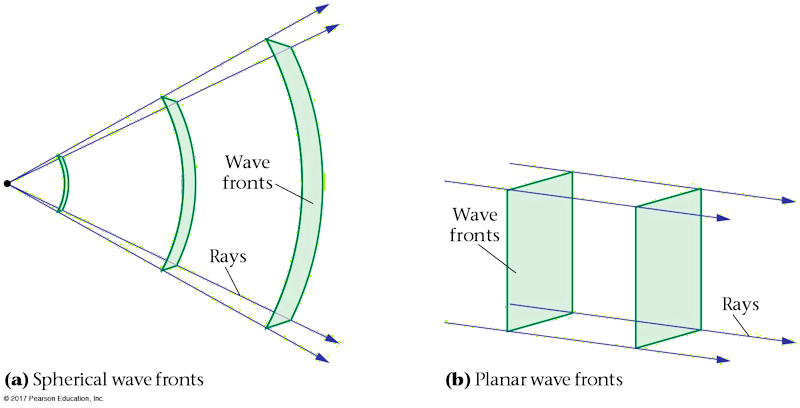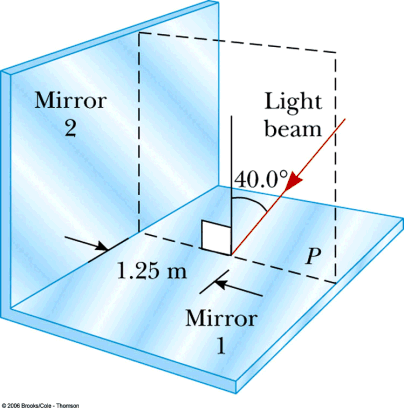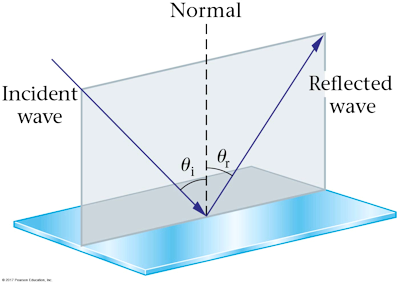Summary
- Electromagnetic waves
- Doppler effect
- EM wave intensity
- Polarization
- Written Quiz Ch. 23
Chapter 26


- The ray model for light
- Lecture learning outcomes
A student who masters the topics in this lecture will be able to:
- describe the relationship between a ray and the wave front it represents
- predict the angle of reflection of a light ray that is incident on a smooth surface
- use geometry to solve problems involving incident and reflected light rays
Practice:
Try this additional example
Example #3
Prepare:
Read textbook sections 26-2 through 26-4 before the next lecture
POP5 25.3a
The angle between two mirrors is 90° and a beam strikes one mirror at 40° and 1.25 m from the
second mirror (see the figure). How far does the beam travel before striking mirror 2?
A. 1.25 m
B. 1.63 m
C. 1.94 m
D. 0.803 m
 Answer
Answer
POP5 25.3b
In what direction does the light beam travel after being reflected by mirror 2?
A. 180° from the original beam
B. 90° from the original beam
C. 40° from the original beam
D. 50° from the original beam
 Answer
Answer
Walker5e 26.EYU.1
A ray of light reflects from a horizontal flat mirror, as shown below. What is the angle of incidence for this ray of light?

A. 25°
B. 50°
C. 65°
D. 130°
Answer
C. 1.94 m

A. 180° from the original beam
A retroreflector, formed by mirrors that are fixed at right angles to
each other, always reflects a ray that is antiprallel to the incident ray.


C. 65°
The angle of incidence is between the ray and the normal line, not between the ray and the surface. Hence the angle of incidence is 90° − 25° = 65°.



 Answer
Answer



